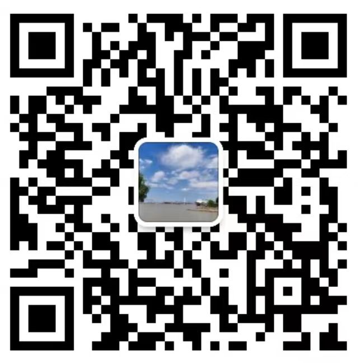
Yangzhou Guoxing Technology explains high-frequency microwave printed boards, professionals do professional things, first explain the definition of high-frequency microwave printed boards for you ● What is high frequency? Usually shortwave frequency ≥ 300MHz, that is, the range of wavelength ≤ 1 meter, called high frequency. ● What is microwave? Generally, electromagnetic waves with frequency ≥ 1GHz (100MHz) and wavelength ≤ 300mm are called microwaves. ● High frequency microwave printed board On the high-frequency microwave substrate copper clad laminate, the printed board processed and manufactured is called the high-frequency microwave printed board. Type: single, double, multi-layer, rigid. High-frequency base material + ordinary FR4 base material, which is a hybrid multi-layer board. The printed board made of high-frequency base material + metal base, mixed and pressed base material is called high-frequency metal base printed board. Reasons for rapid development With the rapid advancement of the communications industry, the original frequency bands for civilian communications are crowded, and some frequency bands for high-frequency communications (military) are gradually being given over to civilian use. Civilian high-frequency communications have developed at an extraordinary speed. Satellite reception, base stations, navigation, medical care, transportation and other fields have shown their talents. ● High confidentiality and high transmission quality require mobile phones, car power stations, and wireless communications to develop towards high frequency. High picture quality requires VHF broadcast programs for broadcast and television transmission. To transmit information with a high amount of information, satellite communications, microwave communications, and optical fiber communications must be high-frequency. ● With the increase of computer technology processing capacity and the increase of information storage capacity, there is an urgent demand for high-speed information transmission. Therefore, the high frequency and high speed of electronic information products put forward the requirements of high frequency characteristics of PCB. High-frequency microwave PCB has become an indispensable accessory product for the electronic information high-tech industry. Requirements for substrate The overall characteristics, processing performance, and long-term reliability of the printed board depend to a large extent on the substrate material. ● In order to achieve high-frequency and high-speed signal transmission, the substrate must be considered: (1) Dk (εr), dielectric constant, or relative permittivity, dielectric constant. (2) Df (tanδ), loss tangent, or Dissipation Factor, dielectric loss factor (dielectric loss tangent). ● Substrate structure: glass fiber, resin, filler. ● CTE (Coefficient of Thermal Expansion). ● Others—Peel strength, insulation resistance, Tg, flame retardant, water absorption... Dielectric constant Dk (1) Definition: The ratio of the capacitance of a dielectric capacitor to the capacitance of a capacitor of the same structure in a vacuum state. (2) The dielectric constant of the copper clad laminate ● The copper clad laminate substrate is composed of resin, reinforcing materials (cloth, fiber, paper), and fillers to form an electrical insulator, called a dielectric. The substrate is actually a capacitor in the entire printed board. ● A large Dk means that the stored electric energy is large, and the signal propagation speed in the circuit will decrease. ● If Dk is small, the propagation speed of electrical signals is fast. ● Generally, the current direction of the current signal on the printed board is alternating between positive and negative. Such frequency exchange is equivalent to the process of "charging-discharging-charging". In the interchange, as long as a small amount of capacitance remains, it will affect the transmission speed. In the high-frequency line, the signal propagation speed formula: V—Signal propagation speed K—constant C—speed of light, 3×108m/s Dk—Substrate dielectric constant ● Reducing Dk will help increase the propagation speed of the signal. The larger the Dk, the lower the transmission speed. The smaller the Dk, the faster the transmission speed. ● Therefore, the low dielectric constant of PCB is used to achieve high signal propagation speed. This is why high-frequency microwave printed boards require low dielectric constants. (3) Low Dk substrate ● PTFE (polytetrafluoroethylene), commonly known as Teflon. Molecular Structure: The molecular structure is symmetrical, so it has excellent physical, chemical and electrical properties. The relative density is 2.14~2.20. Melting point is 327℃, water absorption (24 hours) <0.01%. ● "Plastic King": resistant to many strong corrosive substances, so far there is no solvent that can dissolve it below 300 ℃. ● PTFE, Dk=2.1, very low. PTFE glass fiber cloth copper clad laminate, at 12GHz, Dk=2.60; at 1MHz, Dk=2.62. And FR4's Dk=4.9. Therefore, the Dk of PTFE is 47% lower than that of FR4, and the signal propagation speed of PTFE printed boards is more than 40% faster. ● Disadvantages of PTFE Poor rigidity, many burrs in the milling shape, difficult PTH, high cost, and difficult processing. Except FTFE, other substrates with low Dk The Dk of the base material is low, so low Dk resin, glass fiber, and filler should be selected. Polypropylene ether Dk2.5, cyanate ester 2.9, polybutadiene 3.0, epoxy resin 3.9, electronic grade glass fiber Dk6.6, new NE glass fiber cloth 4.4. The low-Dk copper clad laminates processed by the combination of low-Dk resin and low-glass fiber cloth have the following types: PI—polyimide ring fiber cloth copper clad laminate, Dk3.8; PPO—polyphenylene ether glass fiber cloth copper clad laminate, Dk3.5; CE—Cyanate ester glass fiber cloth copper clad laminate, Dk4.0; BT—bismaleimide modified triazine Dk4.1~4.3. ● Substrate with the lowest Dk Dk=1.15~1.35 (excluding PTFE) Dielectric loss Df=0.002-0.005, specific gravity 0.35g/cc, water absorption rate <0.5%. Peak room structure. Lightweight and not heat resistant.



Consult now